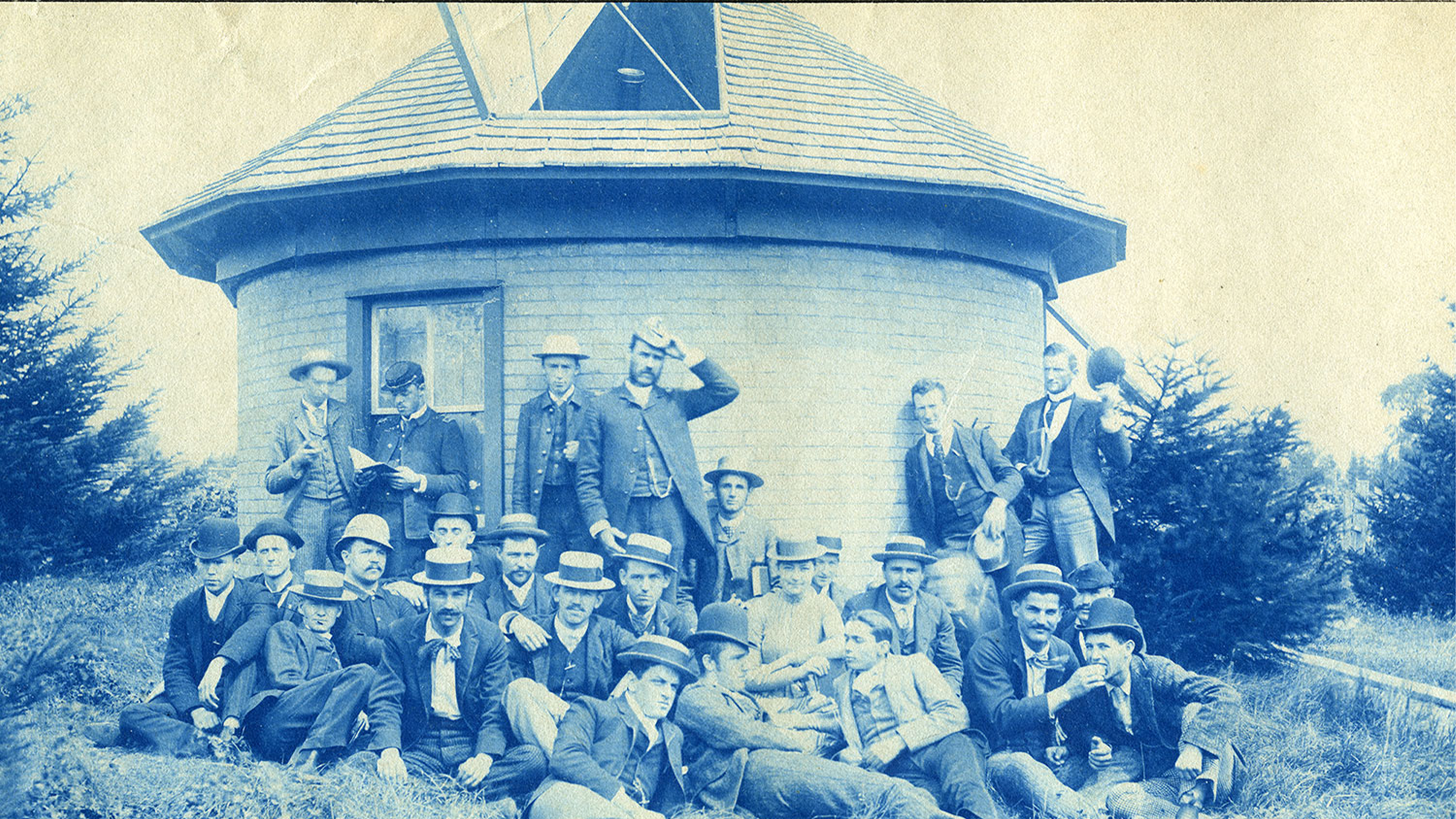

Hammocks normally invoke an image of sipping tropical drinks or relaxing in a backyard, not necessarily archaeological discoveries. However, while installing a hammock this summer at Michigan State University, workers found a hard, impenetrable, surface just under the ground. Campus archaeologists looked at old maps and determined that the object was not a rock, but the 140-plus year-old foundation of the first observatory on MSU’s campus.
[Related: Ceramic pipes kept this town from flooding during monsoons 4,000 years ago.]
The observatory was built in 1881, but was demolished in the 1920s and was buried under ground over the course of the last century, according to The Washington Post. Another observatory was built in 1969 and is still up and running on campus.
“It gives us a sense of what early campus looked like in the late 19th century,” MSU campus archaeologist and anthropology doctoral student Ben Akey said in a statement. “The original campus observatory was built and used at a time when Michigan Agricultural College—what would become MSU—was a radically different institution with only a handful of professors and a relatively small student body.”
Akey will continue to collaborate with the university’s Infrastructure Planning and Facilities (IPF) department to keep up with campus construction projects and research any discoveries that are found. Students will also work to preserve any artifacts that the site might hold and coordinate with IPF to ensure anything detected during construction is properly researched and preserved.

Using the MSU archives, Akey conducted most of the research that confirmed the discovery of the building’s former foundation. The book “Stars Over the Red Cedar’, written” by professor emeritus in the MSU Department of Physics and Astronomy Horace A. Smith, also helped confirm this unique find.
The old observatory is located just behind what is now Wills House and was built by Professor Rolla Carpenter. An 1873 graduate of Michigan State Agricultural College, Carpenter returned as a professor and taught courses in mathematics, astronomy, French, and civil engineering.
[Related: Newly discovered ‘Stonehenge of the Netherlands’ is 4,000 years old.]
“In the early days of MSU’s astronomy program, Carpenter would take students to the roof of College Hall and have them observe from there, but he didn’t find it a sufficient solution for getting students experience in astronomical observation,” Akey said. “When MSU acquired a telescope, Carpenter successfully argued for funding for a place to mount it: the first campus observatory.”
MSU’s present day observatory is located just south of campus and boasts a 24-inch telescope. The space is used for both education, research, and free public observation nights.
“It’s amazing to see how far we’ve come from a little 16-foot circular building to a large building with a high-quality telescope and an electric dome,” MSU astrophysics and anthropology major Levi Webb said in a statement. “Seeing the difference between how observing used to be versus how it is now is very interesting to me and makes me appreciative of the observatory we have now.”
Correction (August 23, 2023, 3:37pm): An early version of this story spelled “Wills House” as “Willis House.” PopSci regrets the error.
